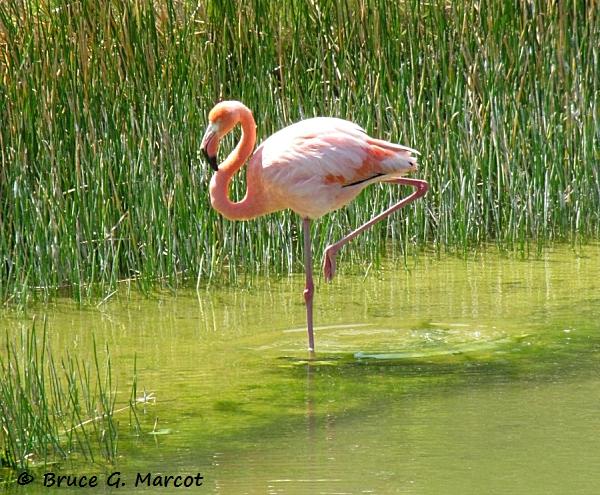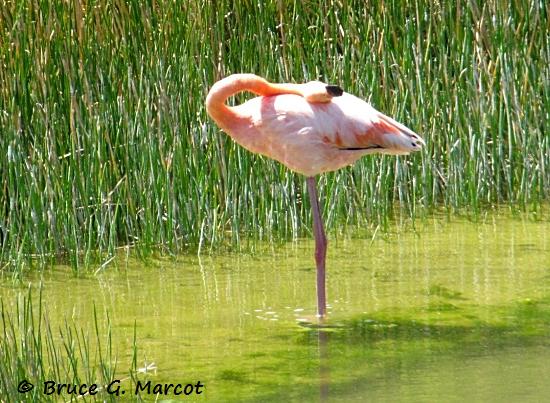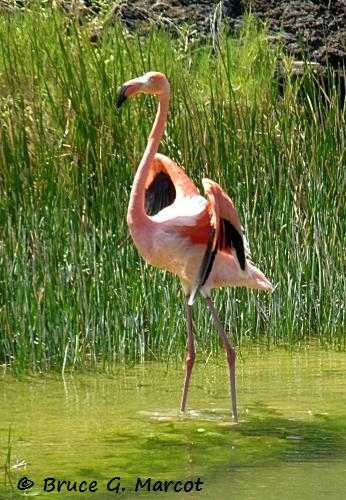|
Explanation: Why in
the world do some flamingos take to balancing on a single leg? My short
video above demonstrates a wobbly Greater Flamingo in the Galapagos Islands
trying its best to find the perfect one-legged stance.
But ... to all this: no. So then ... why? The researchers did find that the one-leg stance is more common when the birds are in water, such as shown in my video and photos here. Perhaps the stance is a means of avoiding parasites on the feet when in soaked muck? Well,
these researchers concluded that it actually helps the birds regulate their
body temperature; the birds tended to do the one-leg stance with it's colder
out. Pulling the other leg into the body could help conserve body
heat. Observations by Anderson and Williams suggest neither; individual birds will use either leg, at various times. But ... again, no. It turns out that flamingos can more easily attain and maintain a one-leg stance than a two-leg stance! Chang and Ting wrote that the birds "...engage a passively engaged gravitational stay apparatus..." which means that the birds' anatomy itself is designed for one-leg postures. Their body weight is positioned over the distal joint of the leg, sort of enabling the bird to "lock in" their leg joints without needing to spend muscular energy to maintain the stance.
The birds don't have a leg to stand on.
|




